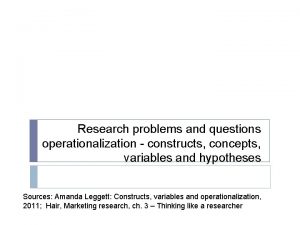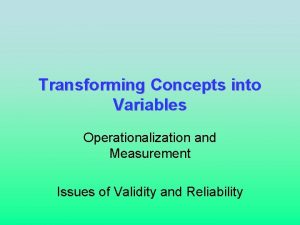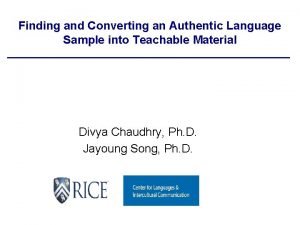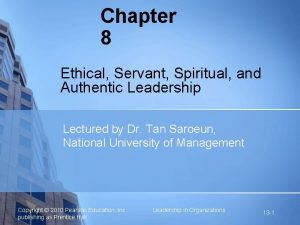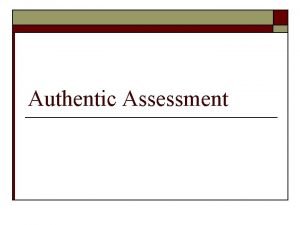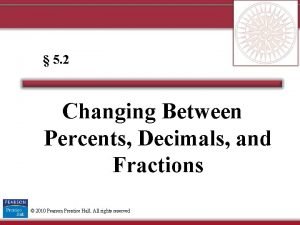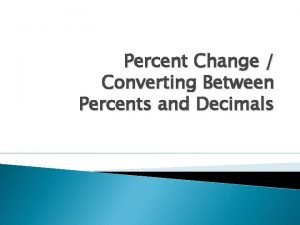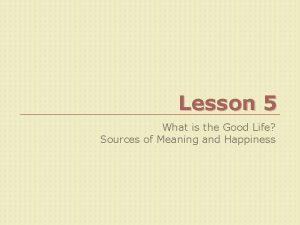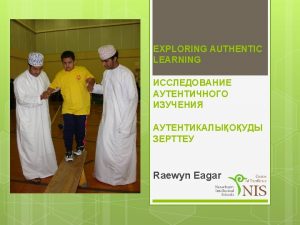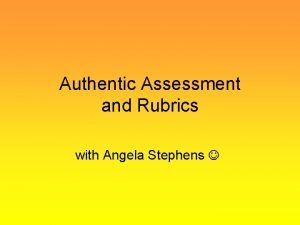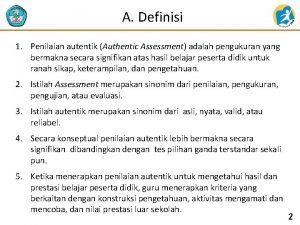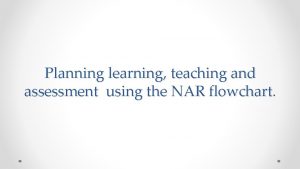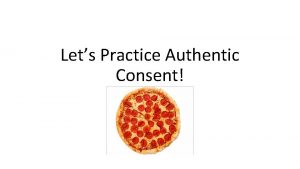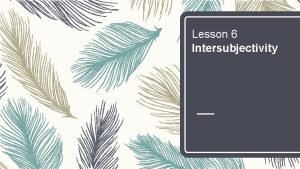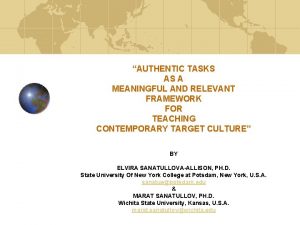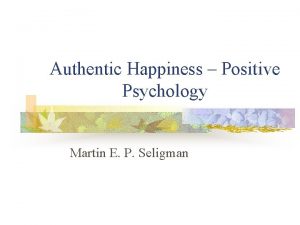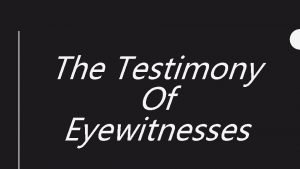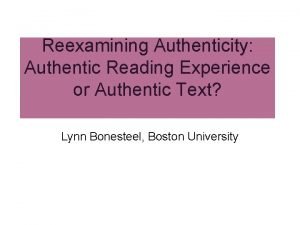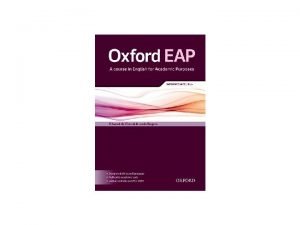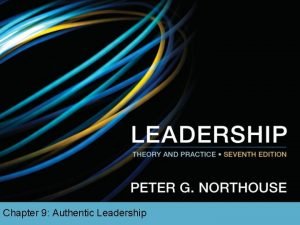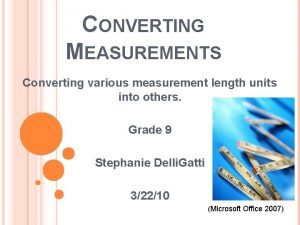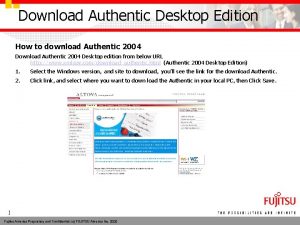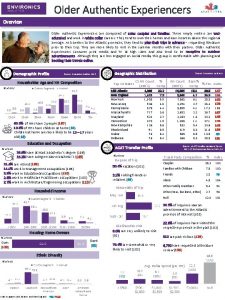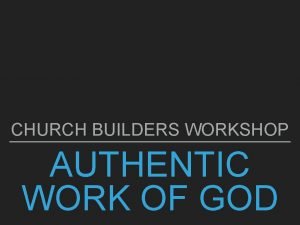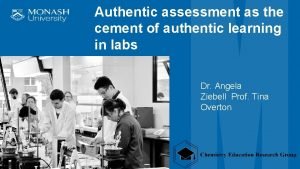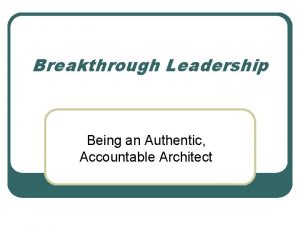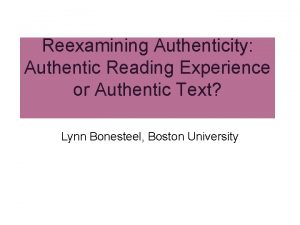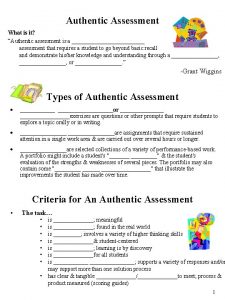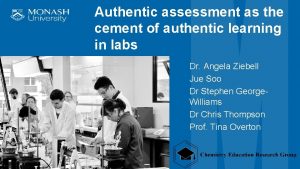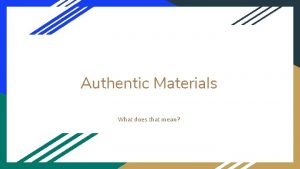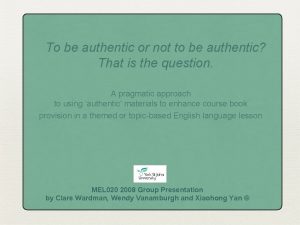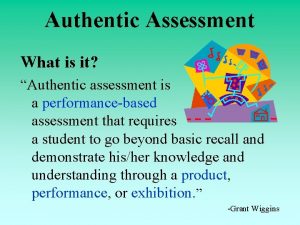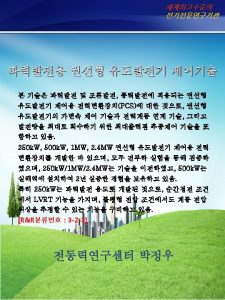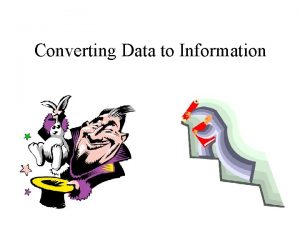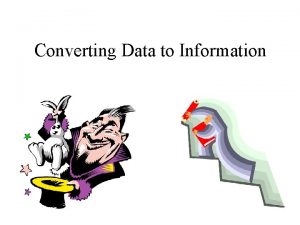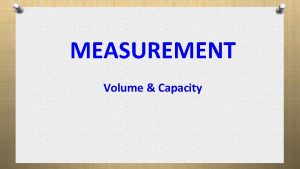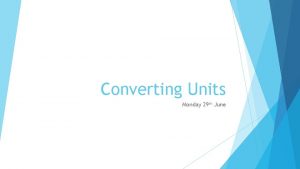Finding and Converting an Authentic Language Sample into






















- Slides: 22

Finding and Converting an Authentic Language Sample into Teachable Material Divya Chaudhry, Ph. D. Jayoung Song, Ph. D.

Presentation Overview 1. Establishing usefulness of authentic material in class 2. Finding sources of authentic data 3. Organizing authentic data 4. Example of data to teaching 5. Hands-on activity

Establishing Usefulness of Authentic Material in Class 1. Unnatural language sample vs. Authentic language sample Michael: Hi. I am Michael Jung. What is your name? Sophia: I am Sophia Wang. Nice to meet you. Michael: Are you Korean? Sophia: No, I am not Korean. I am Chinese. Michael: Ah, really? I am Korean.

Establishing usefulness of authentic material in class 1. Unnatural language sample vs. Authentic language sample S: Hi. H: Hi. S: Uh, what is your name? (honorific) H: Ah…. I’m… Han. S: Ah yeah…I am Jayoung. H: Ah yeah really? where are you from? S: Ah yeah. . I am from Korea. H: Ah… S: Where are you from? Are you Korean? H: Yes, yes. S: Ah yeah. H: What brought you here?

Converting authentic data to teachable material Collect language data

Finding Sources of Authentic Data q Audio-recorded authentic conversations q Video recordings of authentic conversations q Scripted media found on the internet q Scripted interactions (e. g. giving native speakers a prompt and having them enact a situation- resulting conversation can then be used in class) q Corpus of authentic language data(e. g. : http: //www. c-oralbrasil. org/ - for Portuguese)

Finding Sources of Authentic Data Sources of Authentic Language Data Currently Used at CLIC Audiorecorded authentic conversations 6% 17% 25% Videorecordings of authentic conversations Scripted media found on the internet Scripted interactions 11% 19% 22% accessible at: • http: //clicmaterialsld. blogs. rice. edu/ • links shared on accompanying handout for Module #2 Corpus of authentic language data Others

Organizing Authentic Data q. Language Data Teaching Objectives q. Teaching Objectives Language Data

Converting Authentic Data to Teachable Material Collect language data Analyze language data for different linguistic topics

Organizing Authentic Data Parts Topics of File name selected conversation Tutor teacher convo small talk: how was weekend, internship 7. 27 -11. 21 plans, summer plans comparison of Indian classrooms with Rice 16. 31 -18. 34 classrooms With friends over dinner 8. 00 -9. 22 Ordering wine in a restaurant Grammar/Vocab Communicative features Links with textbook greeting, asking for permission to talk, topic expansion, elaboration, "nahin? " , rephrasing keeping conversation going ; clarifying confusion, listener the other person's response "bade logon feedback, seeking more ka school" information; cracking jokes discourse markers for comparison; "main aapki baat samajh raha express opinions ; reject hoon" suggestions asking for preference, giving suggestions idiomatic expressions, narration, helping a friend, friend interweaving of the past and present tense topic development, giving in love, funny story, Indian families, in narration, informal feedback, turn-taking (overlaps , 34. 17 - 36 scolding conversation listener feedback), teasing Exchanging personal present imperfective, repair, listener feedback, talk background 36. 15 - 37. 06 information past habitual tense development what were you doing in past tense 38. 31 - 39. 05 2009 progressive, perfective planning a trip to politeness through use 43. 43 - 45. 02 Colorado of 'sakna' verbs giving suggestions Ch 12 dialogue (where did you grow up) Ch 14 (Prog tense) Ch. 19 – aux verb saknaa

Organizing Data from a TV Show Parts Selected Grammar/Vocab Sociocultural Communicative Features topic Link present prog (nice- Ordering food in a restaurant 18: 28 - 21: 21 "tum chup raho") HHH 1: 09 - 1: 49 past indef tense, past prog Ep 5 (recap) narrating an incident (gossip); listener HHH Ep 5 2: 13 -2: 33 past perf , past prog feedback HHH Ep 4 HHH Ep 5 HHH Ep 5 Students working parttime in a https: //youtu. be/X restaurant 9 ZDag 8 he 2 A Students discussion, working part"mere khyaal se, Agreement/disagreemen time in a restaurant t 8: 24 - 9: 00 kyun, " Not participating in a conversation (silence, 11: 57 - 12: "nahin toh" nahin toh, ) 43 "pata hai ek baar kyanarrating a story to Hindi someone to serve as an mythology 13: 51 - 17: hua" ; past indef, imperative advice/example naarad, bhakti 12 making a phone call to a friend's house 17: 27 -17: 39 answering a phone call making a request to a HHH Ep 7 6: 08 - 6: 24, future tense, prog, teacher 17: 43 -18: 03 Links with textbook https: //youtu. be/U Zc. Av 6 WZtn 4 Ch. 12 (indef) https: //youtu. be/U Zc. Av 6 WZtn 4 https: //youtu. be/U Zc. Av 6 WZtn 5 Ch 8 https: //youtu. be/U (imperatives), Zc. Av 6 WZtn 6 Ch 12 (indef) https: //youtu. be/U Zc. Av 6 WZtn 7 https: //youtu. be/U Zc. Av 6 WZtn 8 https: //youtu. be/U t. EY 5 HZioho Notes Also recordings from HIND 106 Fall 2016; also see discussion below

Converting Authentic Data to Teachable Material Collect language data Analyze language data for different linguistic topics

Example of Data to Teaching : Korean Step 1: Pre-activity: Raising awareness of language feature Data 1: Conversation between Jeremy & Connie https: //mediacosmos. rice. edu/Watch/Zg 6 k 3 Q 4 N Understanding English Listener Feedback Goal-_____________________

Example of data to teaching : Korean J: Nice to meet you. . What are some of your hobbies? C: Uh, I like to go swimming and read during my free time. What about you? J: Oh that’s cool, my friends and I like to go shopping together and as well as sight seeing C: Mm. J: Yes. assessment C: Where do you want to travel then? acknowledgment J: Oh, I really want to go to Korea. C: Oh, so uh, you’ve never been to Korea before? J: No, have you been to Korea? C: Yeah, I actually went last year as an exchange student. J: Really? How was it? C: It was really nice.

Example of data to teaching : Korean Step 1: Pre-activity: Raising awareness of language feature

Example of data to teaching : Korean Step 2: Use of authentic data: Analysis of Korean conversation

Example of data to teaching : Korean Step 3: Application by the students of the target objective Step 4: Assessment activity to test students’ learning of the target objective

Converting Authentic Data to Teachable Material Assessment activity to test students’ learning of the objective Application of target objective by the students Main activity using authentic data Collect language data Analyze language data for different linguistic topics Pre-activity (prepare students to work with the data)

Summary: Authentic Data Teaching Material Audio recorded conversations with native Korean speakers (students; tutors ‘act out’) Listener feedback Raising awareness of the conversational feature in English Guide students to identify the function of the conversational feature in Korean Practicing the structure in speech or fill-inthe blank exercises HW: interaction with native speakers and analyze and reflect on the features incorporated with them Assessment activity to test students’ learning of the objective Application of target objective by the students Main activity using authentic data Collect language data Analyze language data for different linguistic topics Pre-activity (prepare students to work with the data)

Final Thoughts on Using Authentic Data in the Language Classroom q Yes, using authentic data in the language classroom IS timeconsuming q Practice principled pragmatism: q Use authentic materials where you can use it to meet your needs and the needs of your learners

Questions

Hands-on Activity 1. Split into smaller groups by language 2. Do #8 on the handout: language analysis 1. You are given transcripts of three language samples 2. Analyze the samples for language topics that you can teach in your classroom for your students. 3. Do #9: activity design 1. Select one language sample that you would like to use in your classroom and design 4 activities for it (see handout) 4. Do #10: data teaching 1. Now YOU search for data on one of the links provided (Think about where you wan to start? At the objective or let data speak to you? ) 2. How would you transform data teachable material? 5. Do #11: reflection 1. Share your challenges in using authentic data for your classroom.
 Concepts and constructs in research
Concepts and constructs in research Converting concepts into variables
Converting concepts into variables Language data
Language data Ethical servant spiritual and authentic leadership
Ethical servant spiritual and authentic leadership Authentic assessment definition
Authentic assessment definition Authentic leadership theory and practice
Authentic leadership theory and practice Percents to decimals
Percents to decimals Converting between percents decimals and fractions
Converting between percents decimals and fractions Nothing in this world can fill the spiritual vacuum within
Nothing in this world can fill the spiritual vacuum within Authentic learning
Authentic learning Authentic assessment rubrics
Authentic assessment rubrics Authentic assessment adalah
Authentic assessment adalah Authentic assessment
Authentic assessment Authentic consent
Authentic consent Lesson 6 intersubjectivity philosophy answer key
Lesson 6 intersubjectivity philosophy answer key What is authentic task
What is authentic task Happiness
Happiness Authentic assessment
Authentic assessment Authentic assessment
Authentic assessment Fr. vicente balaguer rizal retraction
Fr. vicente balaguer rizal retraction Authentic text
Authentic text Oxford eap a course in english for academic purposes
Oxford eap a course in english for academic purposes Authentic leadership focuses on
Authentic leadership focuses on
